
Xtreme Raptor Day draws record-breaking crowd to Schlitz Audubon Nature Center!
November 16, 2025 | Topics: Events, Places
By Eddee Daniel
When was the last time you were two or three feet away from an uncaged raptor? On Saturday, Nov 8, over 1,350 people flocked to Schlitz Audubon Nature Center for an opportunity to experience just that. It was the largest turnout ever for the annual event known as Xtreme Raptor Day. In a follow-up email Lindsay Focht, Raptor Program Director, said “We were blown away with the response of so many people braving the wintry temperatures to come out and celebrate raptors with us.”

Raptors, of course, are birds of prey. They are known for, among other things, having sharp eyesight (“eagle eyes”) and sharp talons. I had to wonder, when one was staring straight at me from three feet away, whether it was examining the pores on my face. If they can spot a mouse in grass from high in the sky, just imagine what they can observe up close! Many of them also have extraordinarily acute hearing.
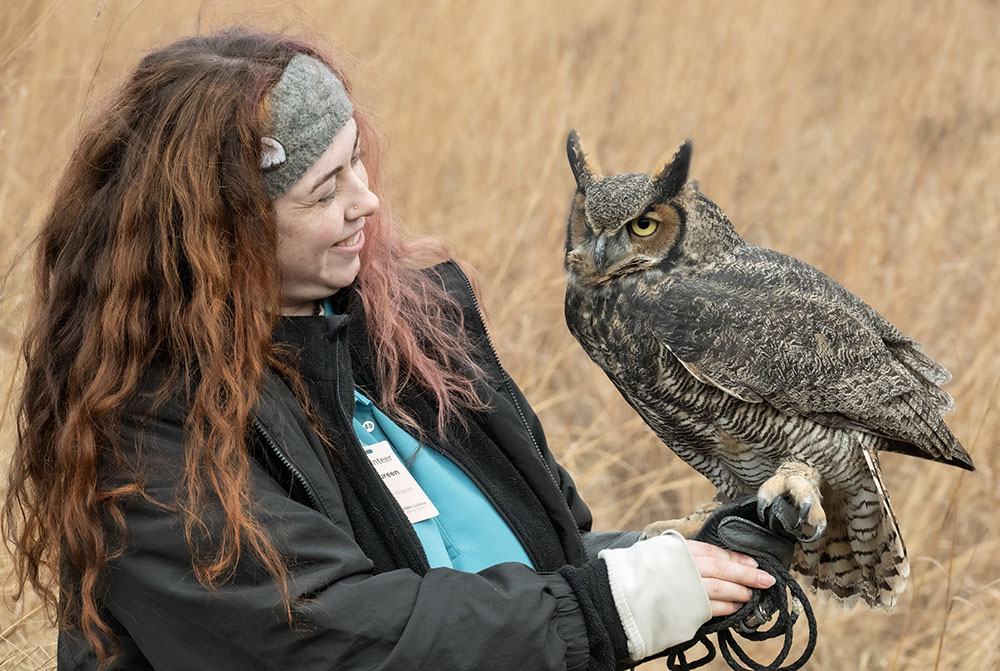
Schlitz Audubon Nature Center calls its birds “raptor ambassadors.” It currently has sixteen resident birds, including hawks, owls, falcons, eagles and two that are not raptors: a turkey vulture and an American crow. They range in size from huge—an eleven-pound eagle—to tiny—a three-and-a-half-ounce owl. All live at the center full-time because they are, for a variety of reasons, non-releasable. Among the reasons are diverse injuries and being raised from an early age among humans. Whatever the reason, the resident birds would not survive in the wild if released.
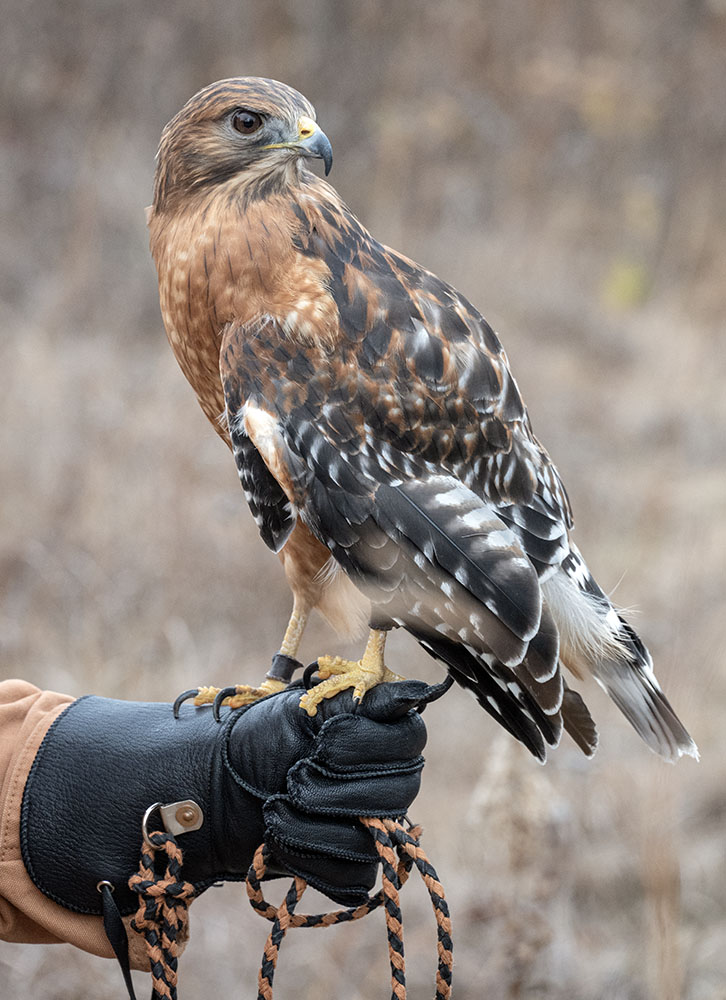
In return for the love and care that they receive at the center the raptor ambassadors help educate the public about raptor ecology and the importance of wildlife and habitat conservation, as well as the dangers that raptors—and their prey—face in our increasingly humanized environments. Altogether they participate in 350 educational programs per year, traveling throughout the state to classrooms, libraries, museums, and outdoor events like the Wisconsin State Fair. Valkyrie, the famous bald eagle, recently appeared during the National Anthem at Milwaukee Brewers and Milwaukee Bucks games.

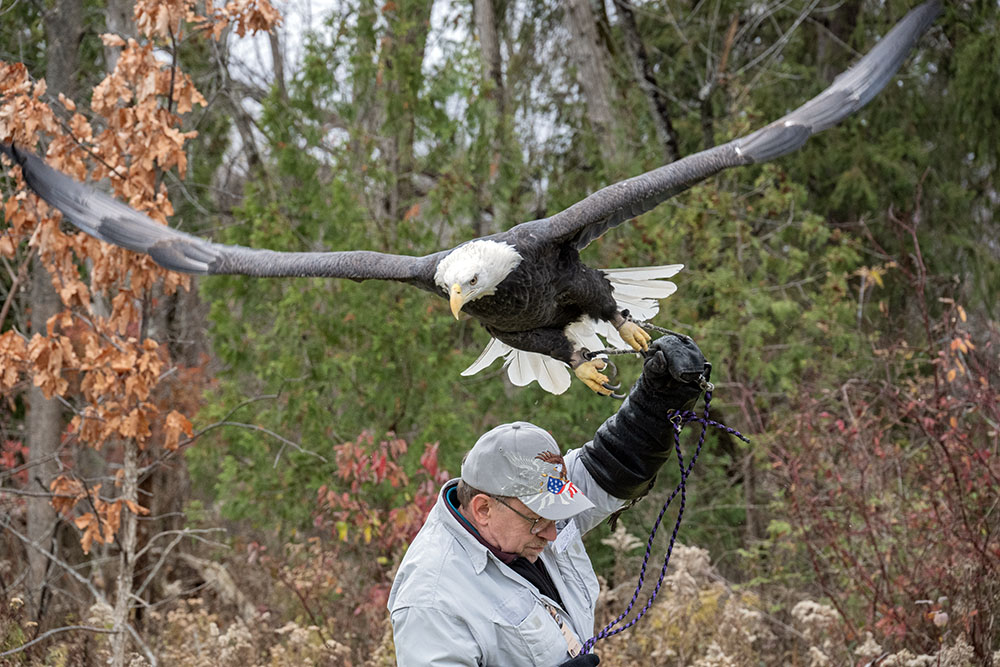
While Xtreme Raptor Day is primarily an opportunity to visit with the birds at outdoor stations located around the property, there were other activities too. Here is Lindsay Focht again:
“Different areas around the property allowed visitors to dive deeper into the lives of Raptors. At our Conservation Station, guests learned about bird research and the values of banding, as well as the essential work of Wildlife Rehabilitators. Raptor Lab offered science experiments to spark further curiosity about flight, feathers, and eggs. This year, we launched a new area called “Owl Cove” which further explored the mysterious lives of owls through camouflage, pellet dissection, and the important functions of nest boxes.”
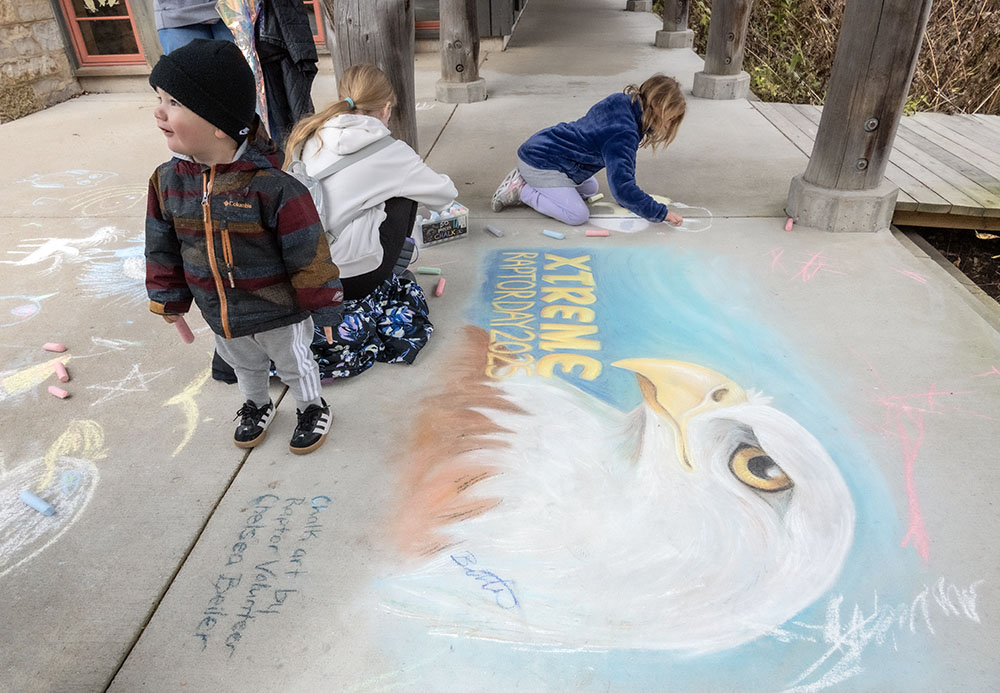
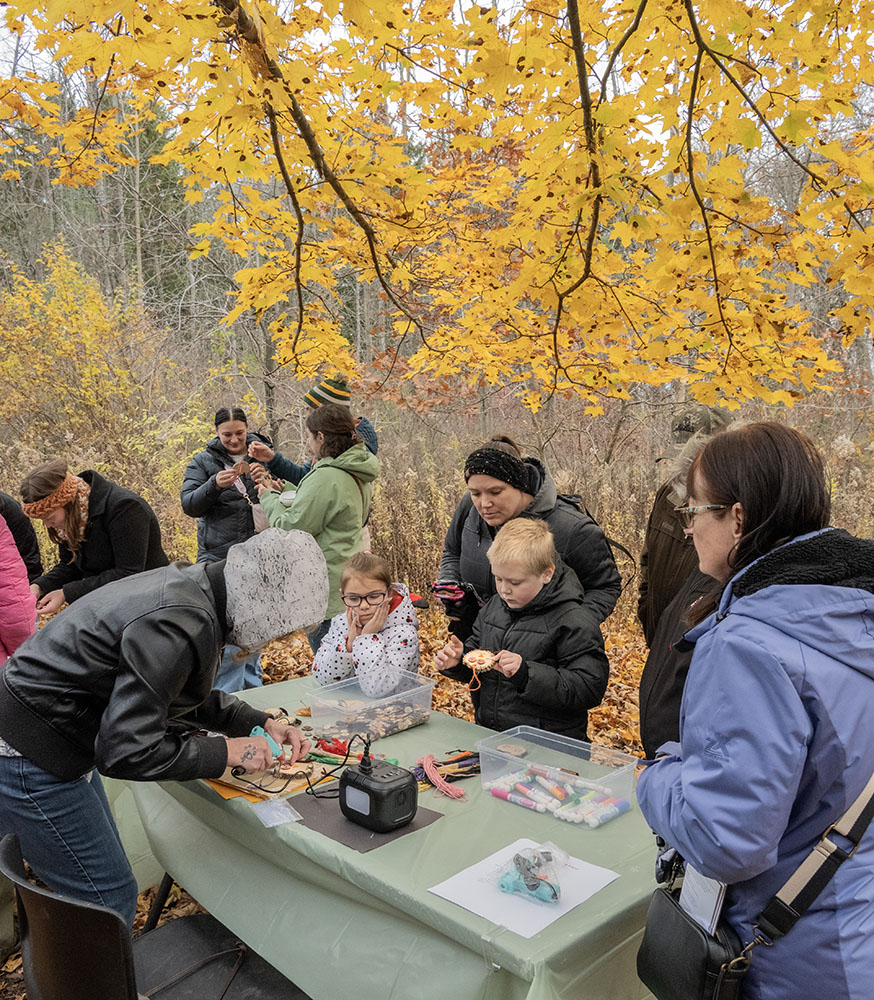

As always, the schedule also included demonstrations in the outdoor amphitheater. This year the lineup included three performers: veterans Athena the owl and Loki the crow, along with a newcomer. Focht says, “Our new turkey vulture, Darwin, made his Xtreme debut, greeting everyone at the amphitheater for our three shows. It was a great way to introduce him to the event and a space where he will be doing flight demonstrations in the future.” Although Darwin didn’t fly this time, he did show off his impressive 70-inch wingspan and his, as Focht put it, “beautiful” bald head.
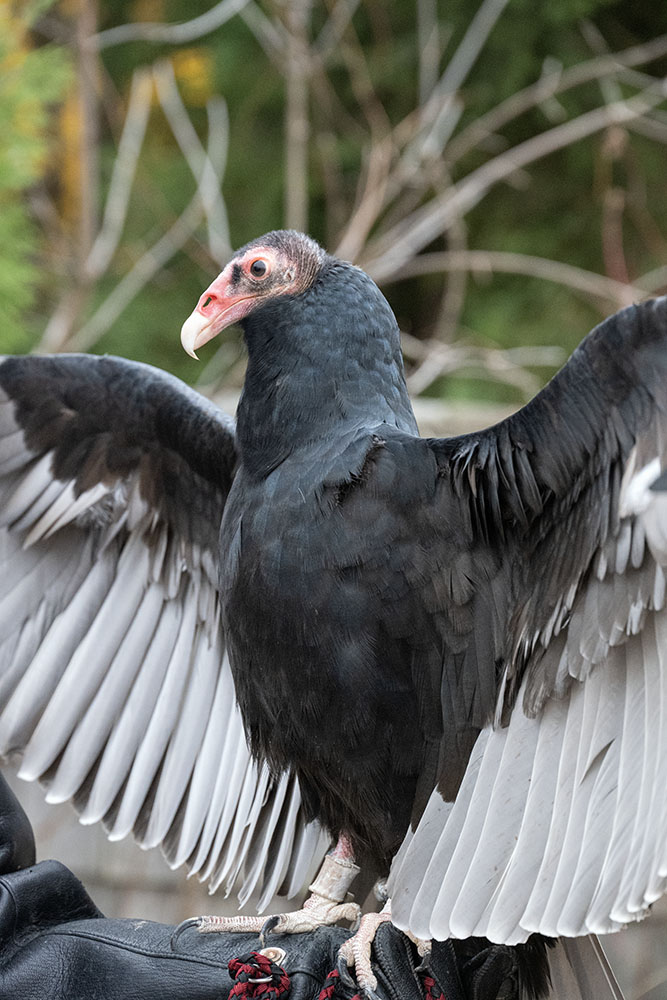
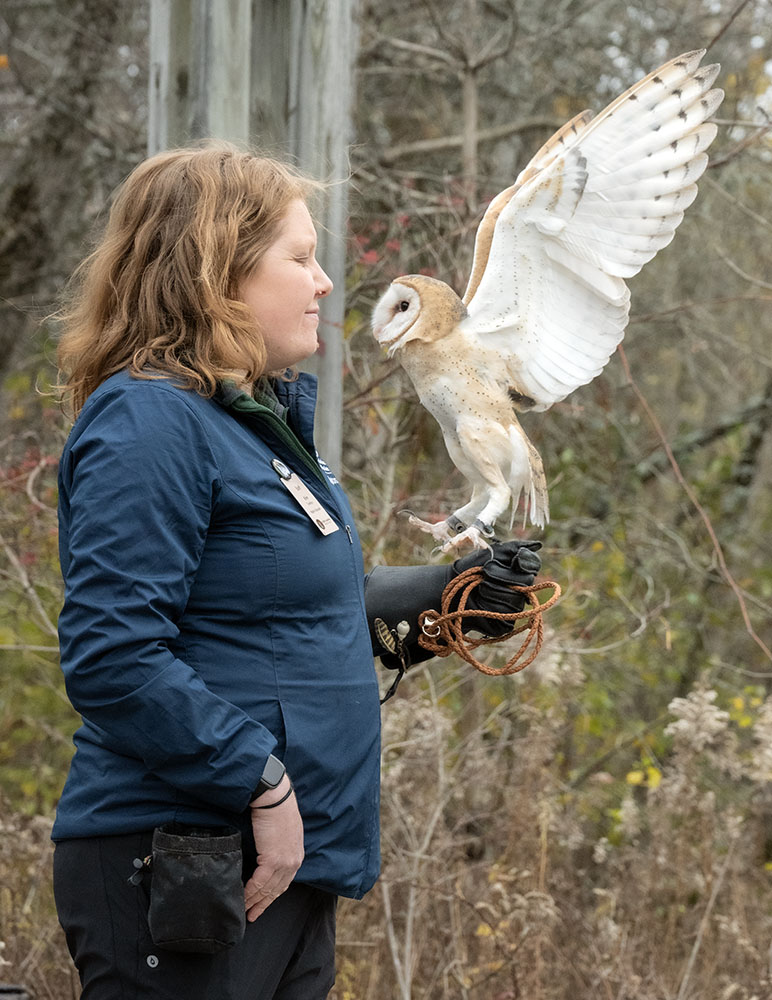
The real show off, typically, was Loki the crow. Dubbed “Crow-casso,” he dutifully grabbed a paint-loaded brush from Focht and applied it to a primed canvas over and over, producing an abstract work of avian-expressionist art.
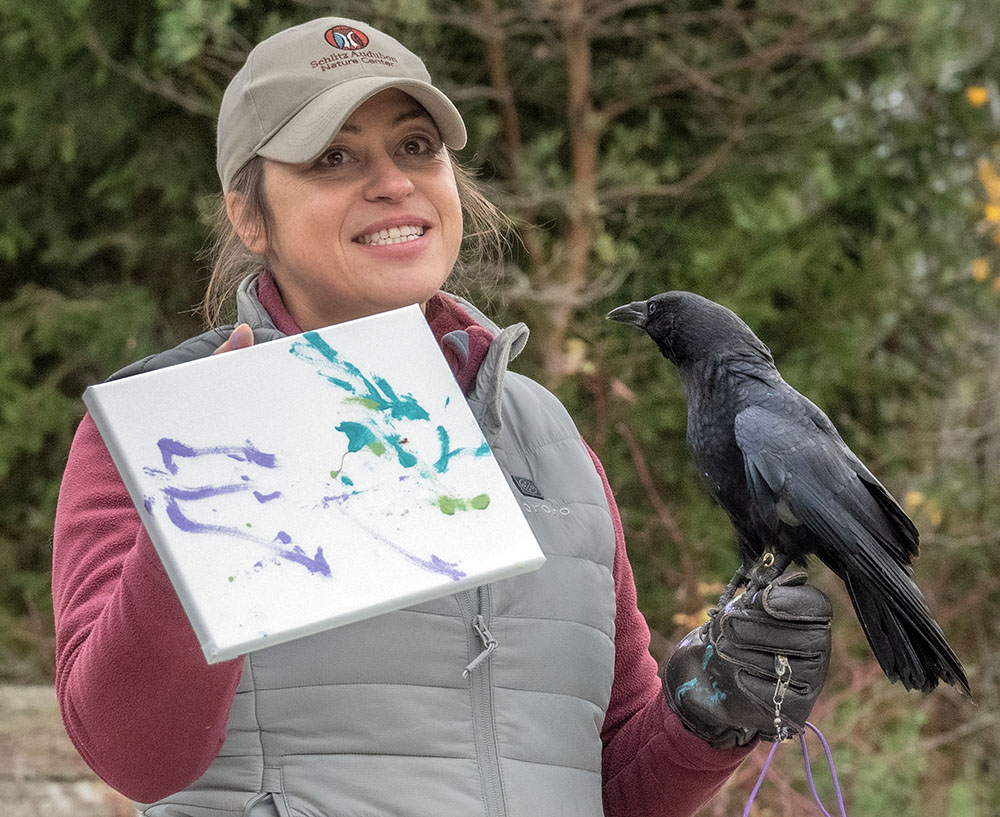
I managed to see and photograph fourteen of the sixteen resident birds during the event, which took quite a while because the birds were not all out at once. Timing my circuits of the stations in order to catch them all, while also catching other timed activities, was a bit tricky. Afterwards, I wandered around the rest of the 185-acre property. It’s enough space to get away from even the record-breaking crowds on Xtreme Raptor Day 2025.
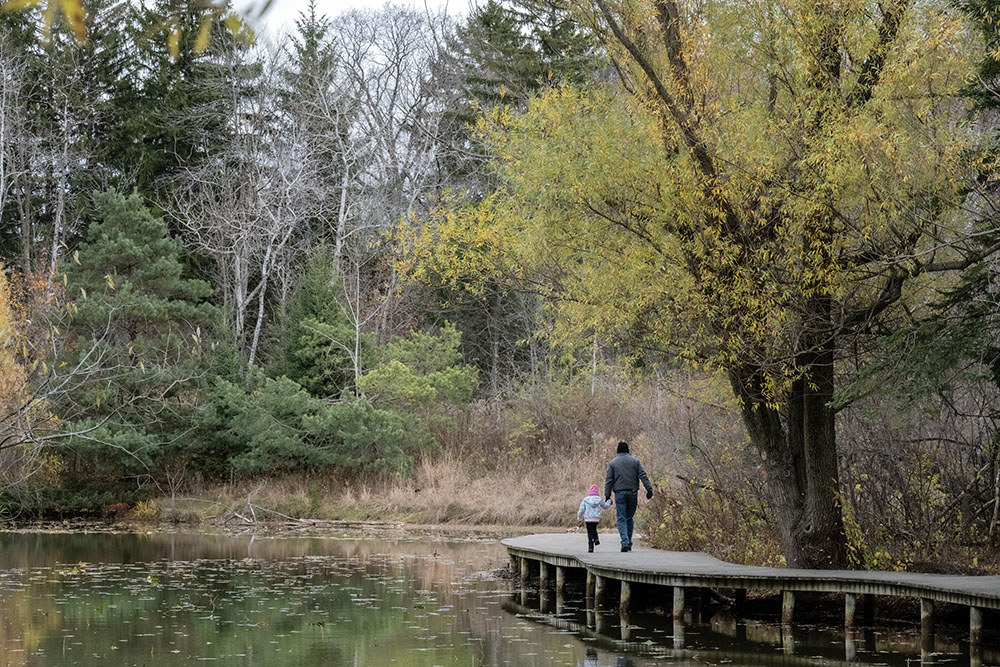


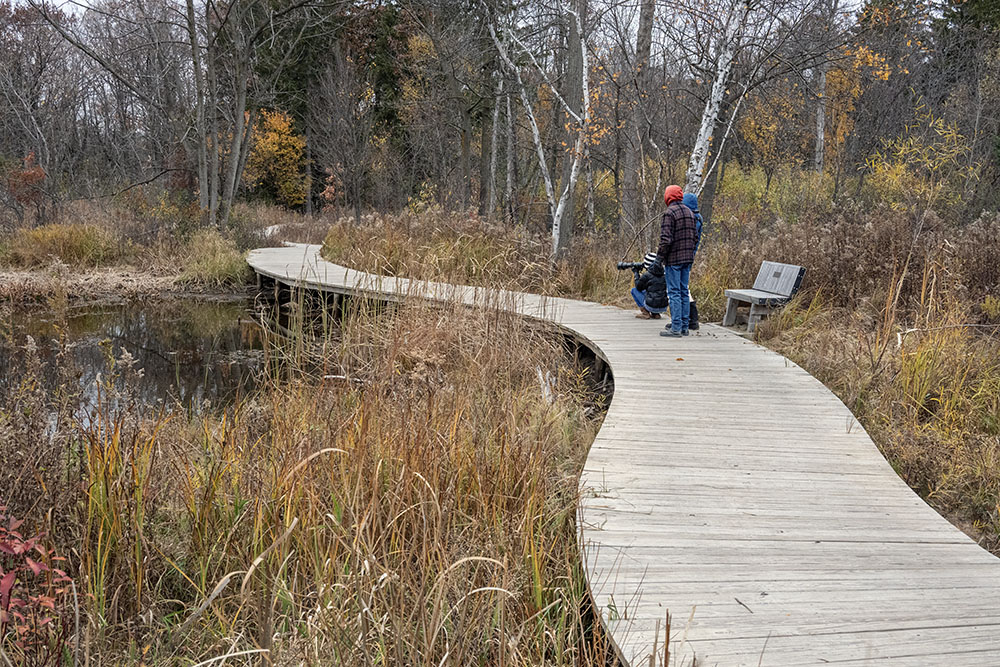
“To me, the biggest joy from the entire event comes from the energy of the guests and providing close encounters with our raptor ambassadors. The curiosity and excitement around birds is palpable and we are very grateful to be able to provide this experience to the community. Throughout the year, our Raptor Ambassadors educate the public about birds, raptor ecology, and conservation — they are truly the stars of the show.” ~ Lindsay Focht

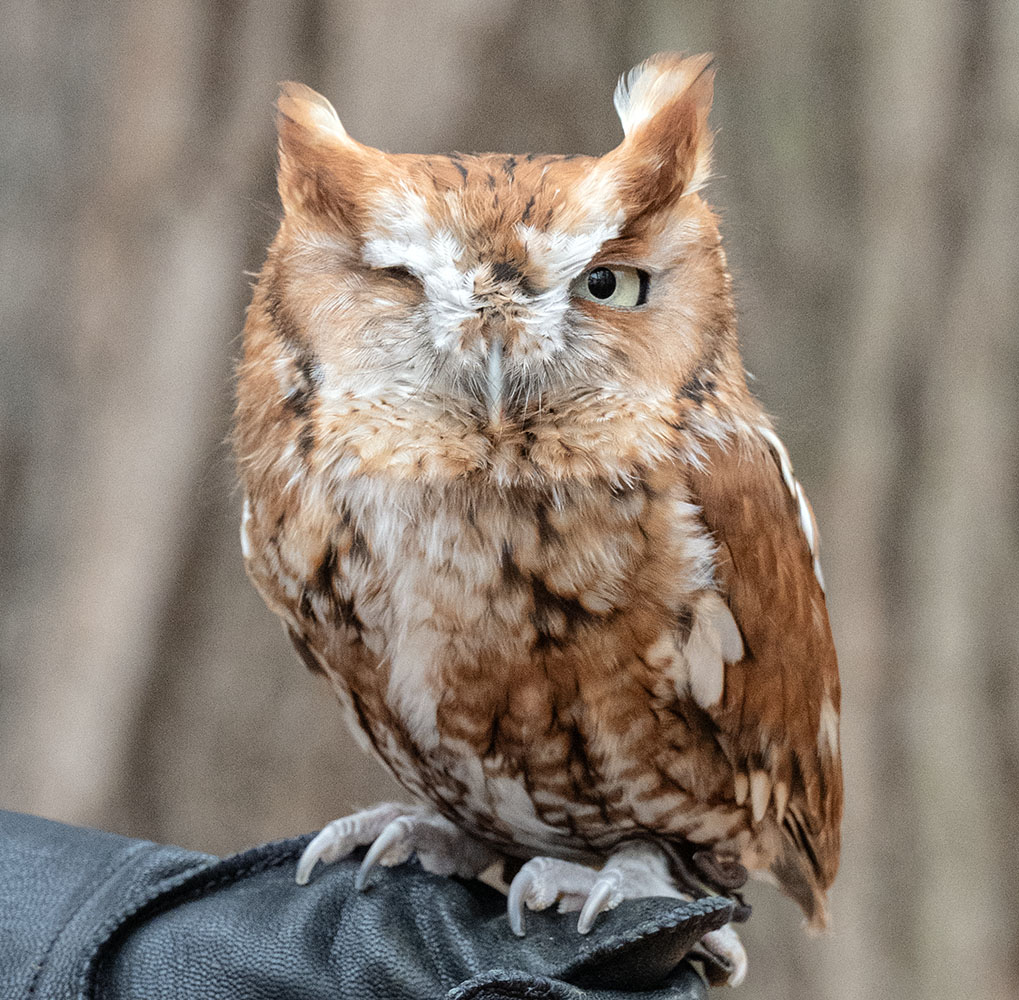
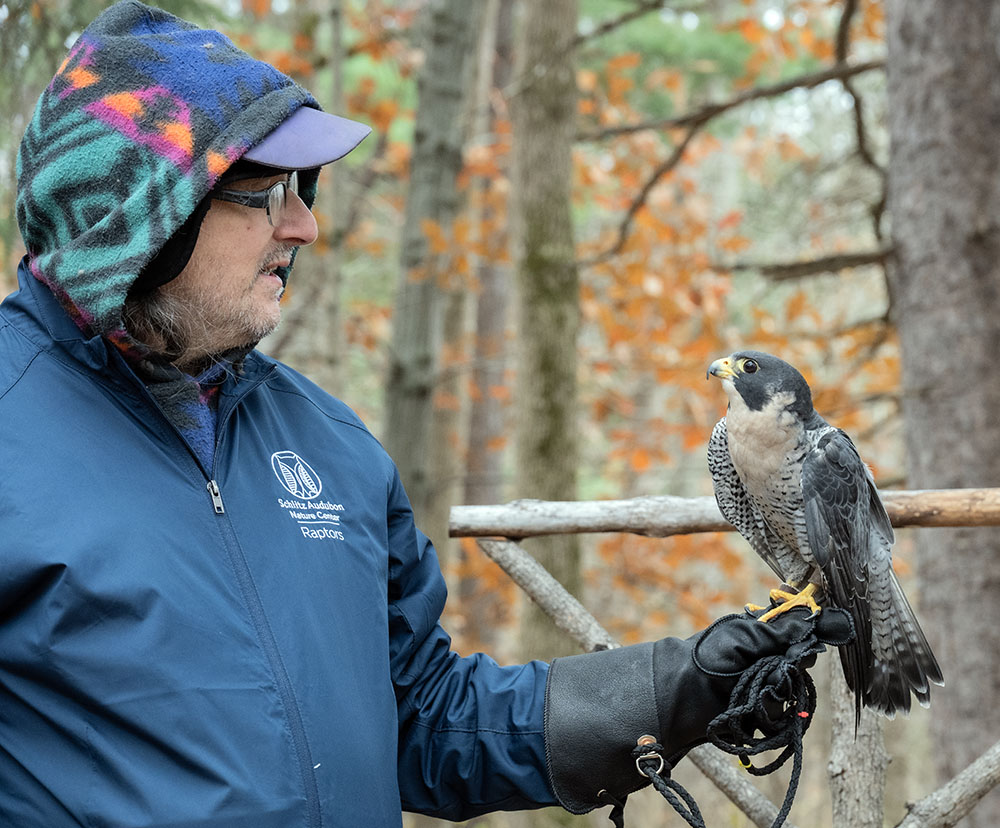

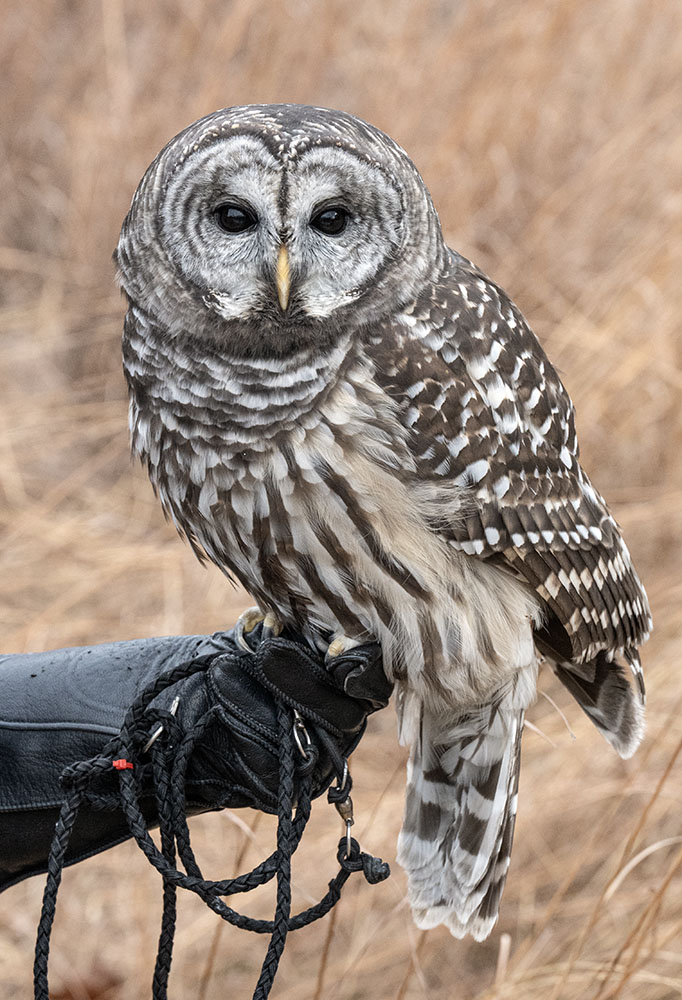
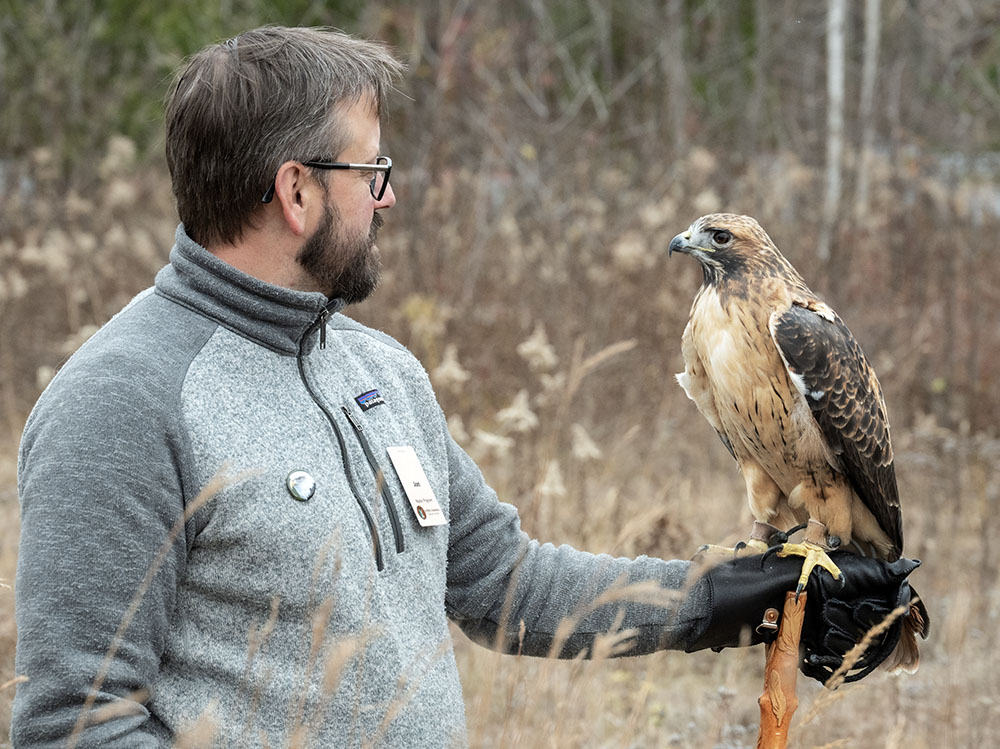
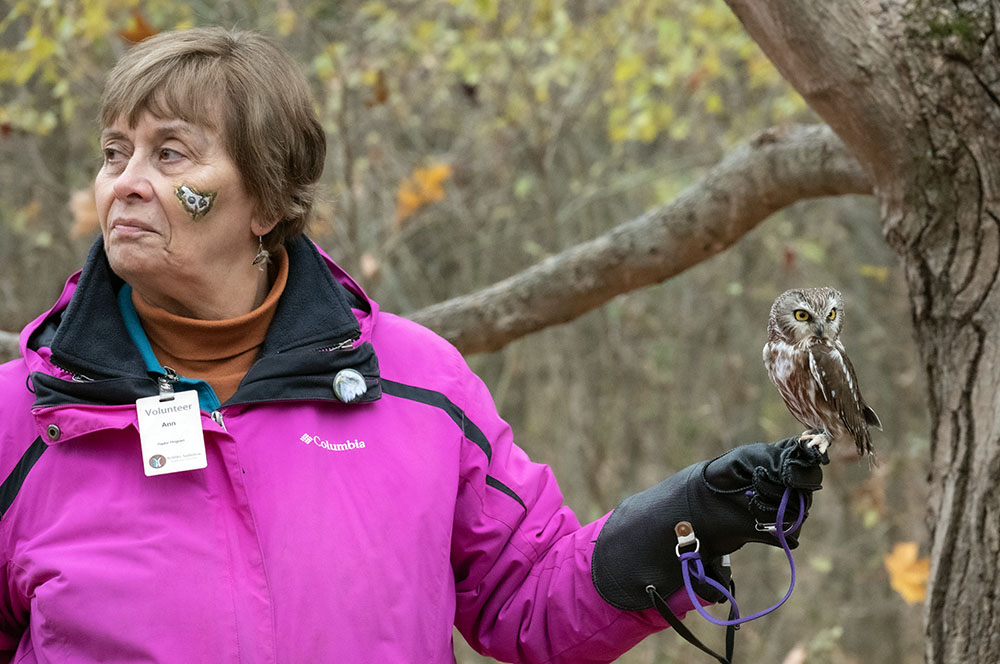
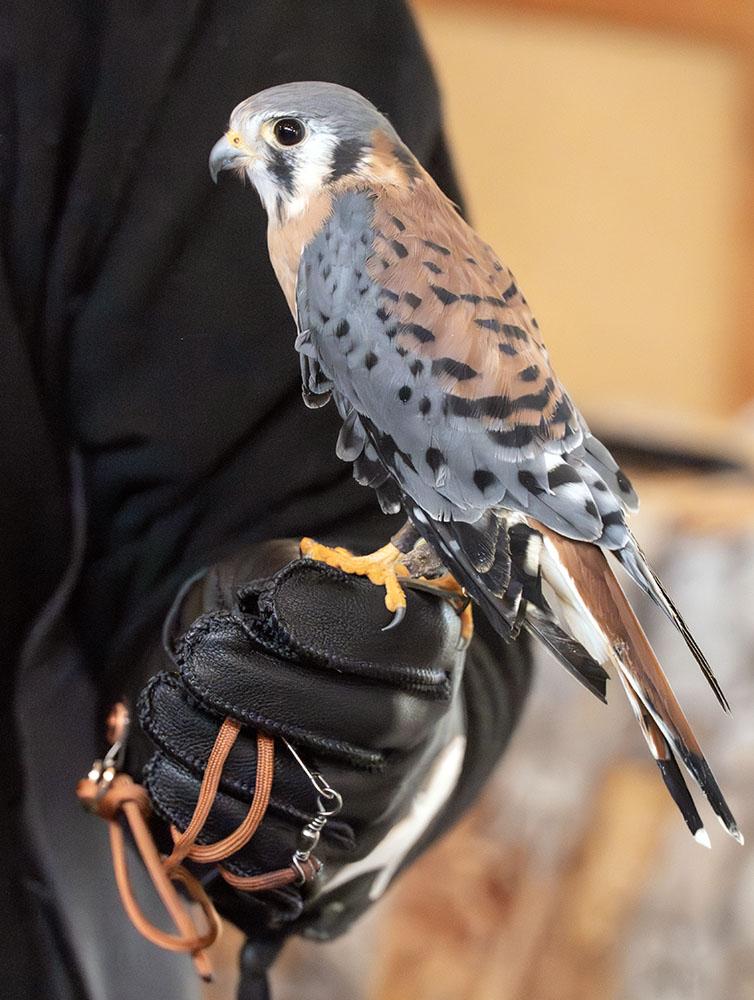
For more information about Schlitz Audubon Nature Center go to our Find-a-Park page.
Related stories:
Raptors get top billing at Schlitz Audubon Nature Center
Photo essay: A misty morning at Schlitz Audubon Nature Center
Xtreme Raptor Day 2021 at Schlitz Audubon Nature Center
Touring Schlitz Audubon Nature Center with the Sierra Club
Touring Sauk Prairie State Recreation Area with Schlitz Audubon Nature Center
Eddee Daniel, writer/photographer, is a member of Schlitz Audubon Nature Center, a board member of Preserve Our Parks, the Project Director of A Wealth of Nature, and editor of The Natural Realm blog. Read more or subscribe at awealthofnature.org. Also available by arrangement for group presentations and guided tours.
Schlitz Audubon Nature Center is a project partner of A Wealth of Nature.
About Preserve Our Parks
Preserve Our Parks, Inc. is an independent nonprofit organization dedicated to the preservation of parks and green spaces. Our mission: To advocate for and promote Milwaukee area parks and open spaces and to strive to protect the tenets of Wisconsin’s Public Trust Doctrine.
For more than 25 years, we have been a leader in advocating for the protection of Milwaukee County park lands, halting many proposals to develop, privatize, or sell local parkland and lakefront spaces. More information about POP, including past accomplishments, is available at www.preserveourparks.org.
One thought on "Xtreme Raptor Day draws record-breaking crowd to Schlitz Audubon Nature Center!"
Comments are closed.


Thanks for all the wonderful pictures of these beautiful birds I love the Raptors I think all birds are pretty but these are truly fascinating it’s a shame some of them were injured and thanks for the info on Mukwonago Park I did not know about that place